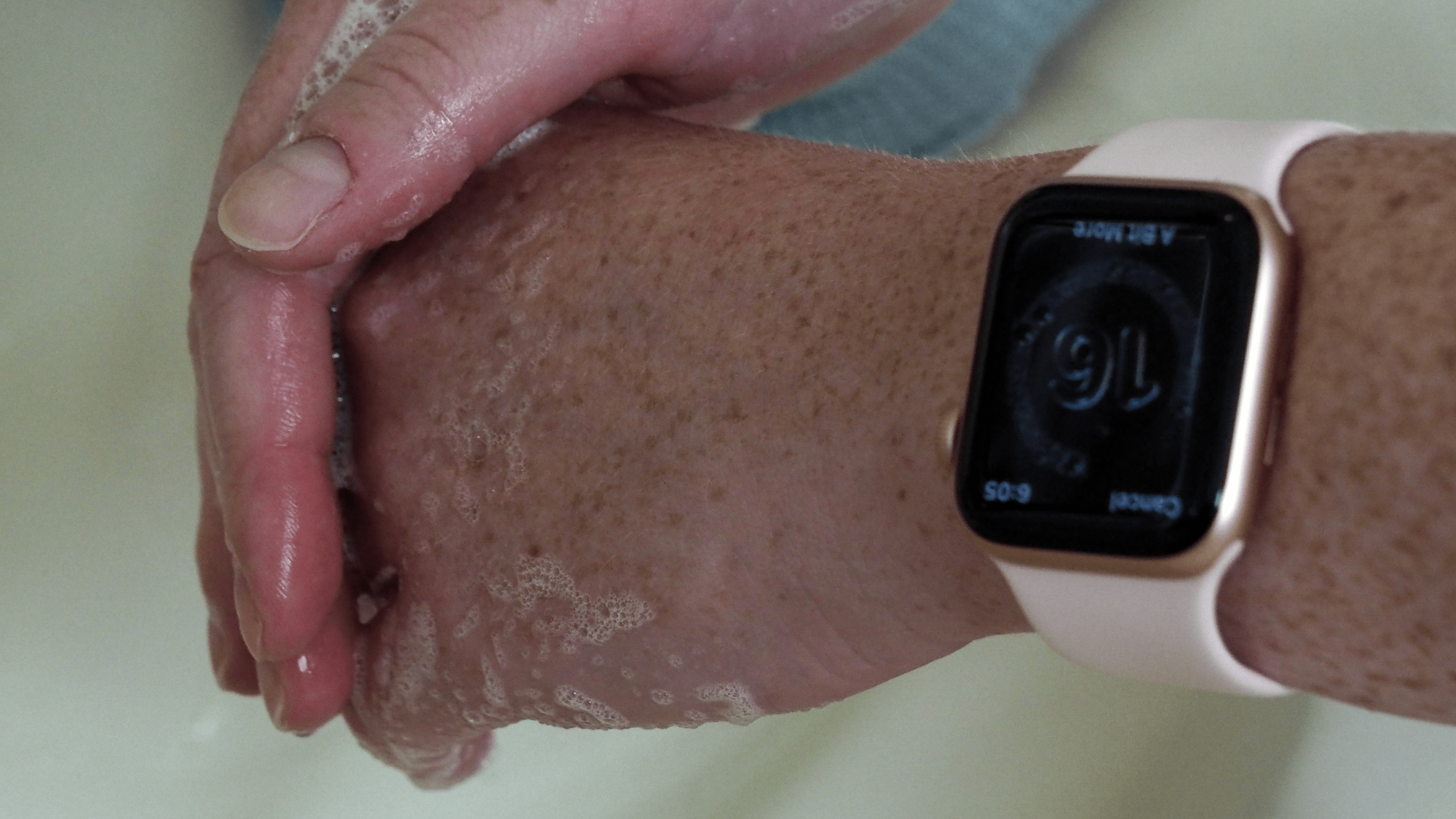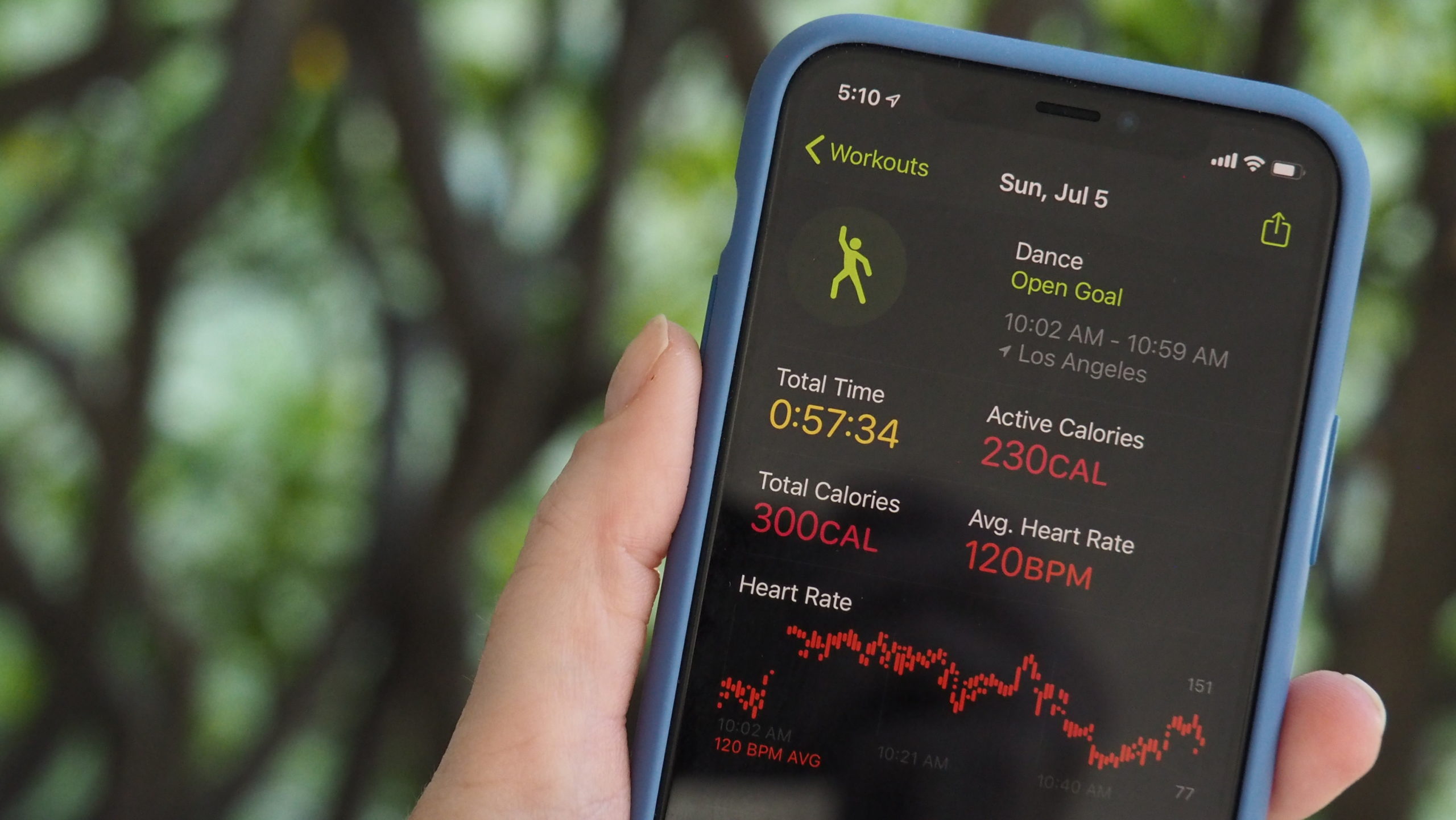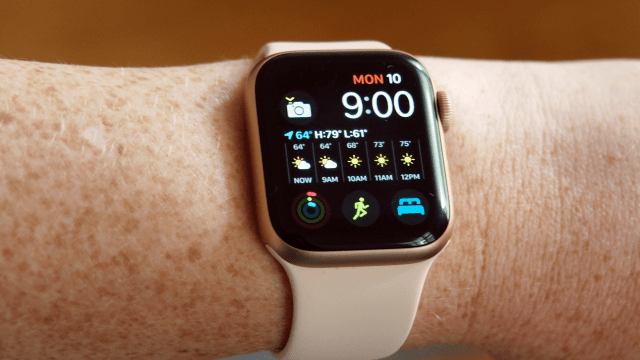It isn’t often that I think to myself, “Wow, this operating system update is jam-packed with features tailor-made for the dystopia we’re living through right now.” Yet that’s what keeps rolling through my mind as I use the watchOS 7 beta, which is now available for the public to try.
[related_content first=”1230829″]
The Apple Watch software upgrade, which will roll out as an official over-the-air update this spring, includes a hand-washing feature, which starts a 20-second countdown when the watch’s sensors and microphones detect motion and running water. That’s to remind you to thoroughly scrub your skin in case you picked up covid-19 while you were out and about. Then there’s a sleep-tracking feature, which helps you wind down before bed and logs how long you spend there. That’s to soothe your mind, which is likely racing from trying to figure out how to make sense of the hellscape that is 2020, and maybe help you get some rest. There are four new workouts for tracking dance, strength and core training, and cooldowns — all things you can conveniently do inside. There are now cycling directions in Maps, because biking outside is safer than commuting in a crowded subway car. (As a relatively new Angeleno, I missed New York public transit — until now.)
These are all features that would be useful in any other time, but there’s no denying they hit differently in this particular moment.
I’ve been using the watchOS 7 developer beta on an Apple Watch Series 4 for about six weeks. I had some issues with it early on — for some reason, the first two versions of the beta made my watch’s GPS completely nonfunctional — but beta 4, which is similar to the version just released to the public, has been stable for me so far. As always, you take a risk by installing beta software on a device you rely on, and that goes doubly so for the watchOS beta, which requires you to also be running the iOS 14 beta on the iPhone to which it’s paired. And this is not a full review or a comprehensive outline of every new feature, just early impressions based on my time living with the software. After all those caveats, if you still decide to dive in, here’s what to expect.
This Could Be a Sleeper

When Apple announced watchOS 7 would finally include built-in sleep-tracking, I was thrilled. Sleep and activity are closely related, and a full overview of both would give you deeper insights into your health. But after weeks of using the new sleep-tracking feature, my overall feeling is extremely: meh.
Setting up sleep-tracking is easy — there’s a new Sleep app on the watch, which you use to set up your daily sleep schedules. My schedule on weekdays, for instance, is 11:30 p.m. to 7:30 a.m. You can set a goal if you want and then let the watch recommend a bedtime and wake time for you, but my routine is pretty well set. You can also toggle on a setting for your watch to wind down 45 minutes before bedtime, which activates Do Not Disturb. And then the watch wakes you in the morning with a lil alarm and some haptic feedback.
That’s all fine. But my iPhone does the same thing (minus tapping me on the wrist). For sleep-tracking on the watch to be useful, I want data. Do I toss and turn while in bed? What is the correlation between my workouts and sleep quality? What about my period, which the watch also tracks? How do all of these things relate to each other? I think Apple Watch, with the combination of its sensors and the data that I input, should be able to give me a complete overview of my health.
But it doesn’t. Instead, I have to open the Health app on my iPhone, where I can see times spend in bed and time spent asleep. The latest beta also shows resting heart rate while sleeping, which is a useful metric. But if you look at that data in the Health app on a granular level, it’s a little…well, useless. You do see overall trends when you’ve used the feature for a while, and the watch told me I get a little over seven hours of sleep per night. But using the Apple Watch’s new feature, I would venture to guess you’re not going to find out anything you didn’t already know about your sleep. I know I didn’t.
Apple’s sleep-tracking feature is intentionally basic, Apple Watch software chief Kevin Lynch told CNBC. The company finds the Wind Down features the more useful aspect because it encourages you to practice behaviours that lead to better sleep, like ignoring your phone and meditating. And I do like Wind Down, but I also want more utility from a sleep tracker. I already use Wind Down on my iPhone, and there it’s actually useful, because I find my phone far more distracting than my watch.
Aside from its limited capabilities, the thing most people have asked me about is sleep-tracking’s effect on battery life. Wearing your watch all night depletes the battery by 20 per cent, you’ll need to charge it up either right before bed or when you wake in the morning. If you forget, you’ll have a dead watch by breakfast. Getting into this habit was tough for me, to be honest, but it’s not unreasonable. And in iOS 14, your iPhone will tell you when your watch is charged and ready to put back on, which is convenient.
Don’t Forget to Wash Your Hands — Seriously
The hand-washing countdown is perhaps the most dystopian feature in any device this year, and also maybe the most useful. The 20-second time limit, recommended by the U.S. Centres for Disease Control and Prevention to kill coronavirus germs, starts as soon as the watch’s sensors and microphone detect hand movement and running water. You’ll feel a vibration after a few seconds of washing, but don’t worry, the watch gives you credit for those first couple seconds — it’s always at 16 by the time I feel the buzz and glance down at my wrist.

Maybe you’ve perfected your hand-washing singalong and know exactly how long 20 seconds is — congratulations. I discovered I’ve been washing my hands for far longer than necessary, which can’t hurt, but does explain my incredibly dry hands.
Setting it up is easy — you can do it in the Health app on the watch or your iPhone, under a new section called Handwashing. You can toggle on both the 20-second timer and hand-washing reminders, which use your location to nudge you to wash your hands when you return home.
New Workouts

Apple added a few new workout-tracking options in watchOS 7, but they’re pretty underwhelming. Core training, functional strength training, and cooldowns are brand new, and while Apple said dance-tracking was new for watchOS 7, that’s not exactly the case — the algorithm has just been fine-tuned to more accurately track calorie burn by taking into account upper body and lower body dance moves.

I take the same live-streamed, cardio-based dance class twice a week, and the post-workout calorie burn reported in the Activity app is comparable for those classes in both watchOS 6 and watchOS 7. The core training and strength training workouts don’t track reps or sets, just calorie burn and time elapsed. That’s fine; at least the watch now gives you credit for those specific workout types, but watchOS 7 just isn’t the fitness-focused update that we’ve seen from past Apple Watch upgrades.
More Watch Face Options
Apple Watch owners are always clamoring for more watch face customisations, and while you still can’t design your own — at least not from scratch — there are a few more options in watchOS 7.
The new Chronograph Pro face uses an integrated tachymeter to display distance or speed over time — useful if you’re an aviation nerd or car enthusiast. (I am neither of those things, so this isn’t my preferred face.) The extra-large watch face now puts both the time and one giant complication in the middle of your display to eliminate the distraction of multiple complications (and I assume for accessibility this face will be useful for those with low vision). You can also now apply various filters to the choose-your-own-photo watch face, to remind you of happier times before the world was on fire.
But the biggest change to watch faces in watchOS 7 is face-sharing. The Watch and iPhone App Stores will curate customised watch faces that you can install for yourself, and you can share your own with friends via text or with a link on the web. These aren’t brand new watch faces, though, and you can’t actually design totally new faces for yourself. The customisations are colours and complications that you might not have thought to combine. I haven’t gotten to test this yet, but as someone who rarely thinks to change her complications, I am curious to see what the curated combos will look like.
It’s the Little Things

The biggest change in how I use my Apple Watch with watchOS 7 is the lack of Force Touch, which Apple phased out in its latest software. This is huge: Force Touch is how I clear notifications (which has been replaced with a Clear All option at the top of your notification scroll), change watch faces, and unlock specific features within apps, which have used Force Touch as a way to navigate since the Apple Watch launched. And that made sense — the Apple Watch has a very small screen, and being able to use different methods of touch to navigate made it easier.
But Apple has slowly moved away from Force Touch leading up to this move, doing away with Force Touch to end a workout and to change a watch face. Now that it’s gone for good, the biggest thing I miss is forcefully pressing to clear notifications. I’m sure it’ll stick eventually, but I do find myself missing Force Touch just a little.
Great Expectations
All in all, watchOS 7 is a more basic upgrade than I had hoped, especially on the sleep-tracking front, but it also includes features that are unexpectedly relevant right now.
Mostly I’m curious to see the hardware Apple will release alongside watchOS 7’s official rollout this spring, which may deliver even more meaningful improvements — improved battery life and more advanced health features are at the top of my list.
